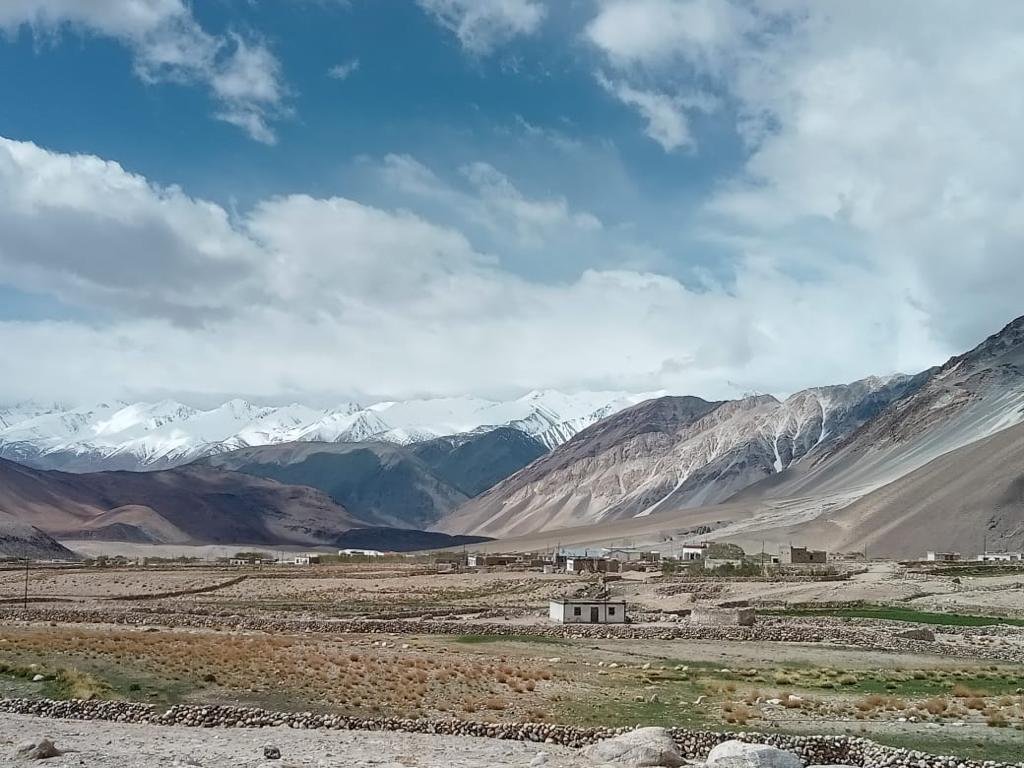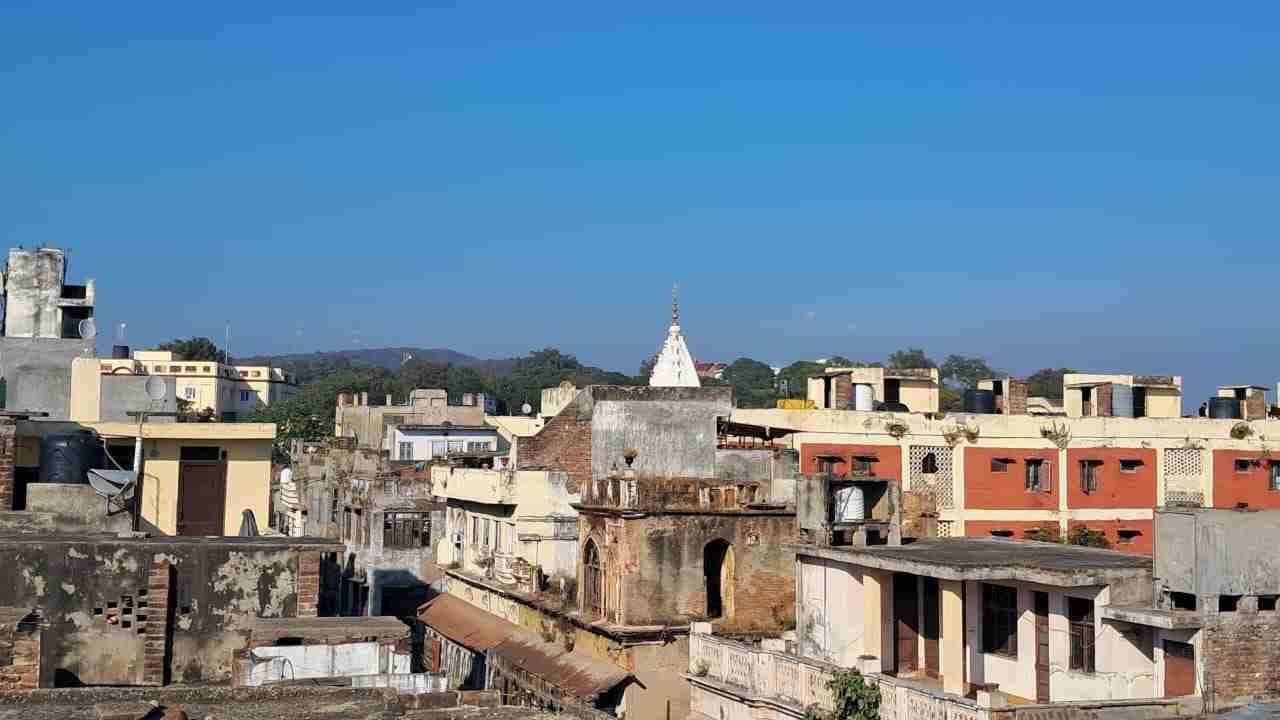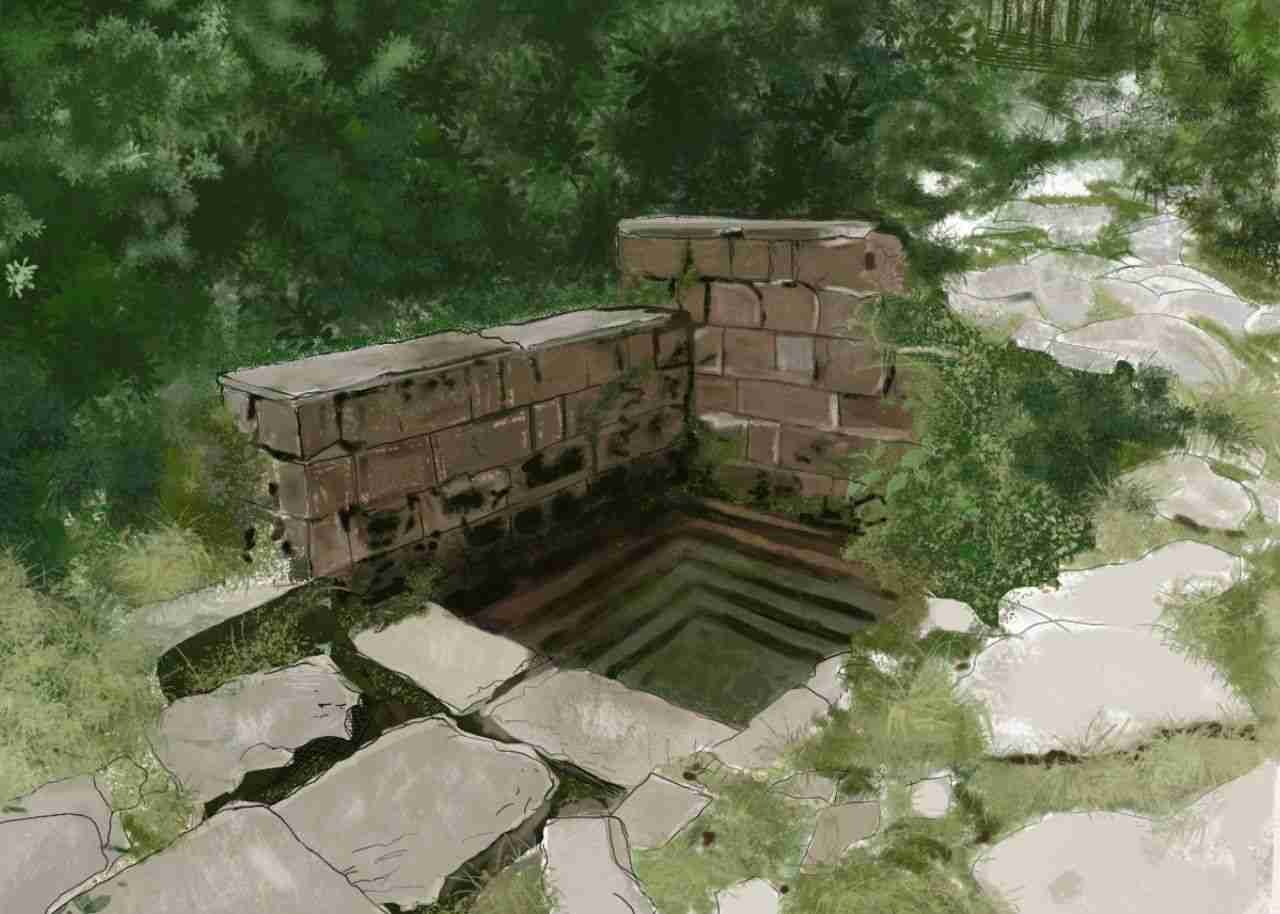Its monsoons and my ancestral mountains are overflowing with water. Green forests stare glaringly at the cloudy sky as I make my way riding pillion with my father to Rampur-Rasool, a region that held our ancestral home about 200 years ago. Mountains in this part of the world hold fascinating tales of historic migrations spanning across thousands of years. In a seemingly desolate, so-called remote world around Gilgit they hold secret stories of some of humanity’s most historic and daring journeys to higher altitude battlefields.
There are no roads to Rasool, the first of the twin villages and we climbed through the old treks, almost indistinct at most places due to sleepy waterfalls and rainwater running like beating arteries across the slope of the hill. In our pursuit to reach a pond that held the only memory of my forefathers we almost circumambulated the whole village.
We made our way through people’s verandas, through courtyards of the remnants of people’s ancestral properties, through farms of corns and paddy, through mud and wood homes freshly layered with cow dung and through muddy routes marked since centuries by the sacred banyan trees and freshwater springs.
As we walked our way back to our bike, we sighted a woman with her little son who said they were on their way to meet a local healer. A shopkeeper whom we had sought direction from in this google-less world encouraged us on our adventure ahead to Rampur, the twin village that held the ancestral home of General Hoshiyara Singh, the man who is credited with Dogra kingdom’s victory over Gilgit in 1863.
Valley overlooking Gen. Hoshiyara Singh’s 200 years’ old home.
Gilgit is of high stakes today in the geo-political chess game—a disputed territory between India and Pakistan, China is building the $80 billion worth China-Pakistan Economic Corridor (CPEC) through it. But almost 160 years ago amidst an intriguing chain of events, Maharaja Ranbir Singh, the second Dogra king after Gulab Singh had sent a punitive force led by the then Gen. Hoshiara Singh to conquer Gilgit and today I was on a journey to meet his descendants.
The question in my mind was simple — how did a soldier from a sleepy, remote village manage to cross the inhospitable himalayas to reach the ranks of the Dogras kingdom that integrated a territory sandwiched between some of the most contentious conflict theaters of the world in the last two centuries.
Unaware of the story that awaited me I simply thought I was on my way to fathom something more about the connection of my sleepy region with the rest of the world — after all Gen. Hoshiyara had traveled from here to what even today remains one of the inhospitable roofs of the world at above 15,000 feet.
What started that day turned into a fervent search through people and facts in Jammu, Udhampur, London, Delhi and through a few books and papers because unlike Gen. Zoravar Singh who’s credited with the Dogra kingdom’s victory over Tibet principality and whose name comes along with Maharaja Gulab Singh, the founder of the Dogra kingdom of Jammu and Kashmir, little is in the front pages of history about Gen. Hoshiyara Singh.
He simply vanished after Dogra Kingdom’s victory over Gilgit in 1863. And this is our search through some of the most mysterious events of that time.

This map shows the journey of Gen. Hoshiyara Singh from a sleepy village (orange dot at the bottom edge) to the Dogra power corridors in Jammu and Srinagar and to the higher battlefield of Gilgit in 1863. Google map adapted by Venus Upadhayaya.
Victorian Sword in a sleepy village
I was very excited while entering Gen. Hoshiyaara’s two century old home. The mud and the wood home still intact made me instantly nostalgic about my ancestral home. Things turned more exciting when the family brought out some of his weapons: a battle axe like Thor’s axe and two swords!
While I could instantly recognise one sword as a Sikh or a Dogra sword with a cloth scabbard, the other sleek one looked Victorian like the one used by Redcoats in the British historical dramas on Netflix!
And I was right! It turned out to be a British Diplomatic Sword,
A straight steel blade decorated with floral scrolls, a cartouche with Phelps Calcutta & Co to one side, the wooden sheath with brass fittings and leather attachment.
The Victorian sword of Gen. Hoshiyara Singh. Video by Venus Upadhayaya.
Victorian or court swords were also called dress swords were mostly carried for ceremonial events and were never meant to be used in anger. Some of them can be seen on UK auction websites for £70-100. The one I held in my hand was however far more historical because it was the sword of Gen. Hoshiyara Singh and also because no historical analysis of it and the events related to it is available today.
The family alleges that Gen. Hoshiyara was poisoned in a court conspiracy immediately after the victory of 1863 while he was recovering from battle wounds in a hospital in Udhampur and that his gallantry records or anything that would have contributed to history were burnt. He was poisoned by his in-house adversaries because the battle of 1863 for Gilgit was decisive for the Dogra rule and meant a great rise in status in the royal court for whoever led it.
Tales of gallantry known locally in the village include him carrying a canon uphill on his shoulder after the horse carrying it collapsed!

Gen. Hoshiyara Singh’s 200-year-old mud and wood ancestral home on August 9, 2022 in Rampur hamlet of Kathua district of Jammu and Kashmir in India. The house is maintained by his fifth generation. Image courtesy: Venus Upadhayaya.
The family was unaware of the sword’s historical value and often lends it free to the wedding parties that still require the groom to ride a horse and carry a sword in this part of the world.
The only explanation I could find of a Victorian sword’s presence in this sleepy village is related to the events of 1857. Scholar Amar Singh Chohan in his Phd thesis titled “The Gilgit Agency 1877-1935) mentions that in exchange for the “independent sovereignty over this extensive region, Gulab Singh besides promising to pay seventy five lakhs of rupees to the British, engaged himself to come to their assistance with the whole of his army whenever they were at war with any people near his frontier.”
This frontier, it’s to be noted, included the significant wild northern frontier, most of it unidentified and unmapped at that time. This geographically unknown region was muddled with despotic chieftains, was route to frequent attacks and invasions that the British rulers of India dreaded. They also dreaded that the Russian empire would use these borders to reach India, their most prized colony. Most significantly the Dogra warriors and subsequently the Dogra military had the maximum access to this region starting from the days of their presence in the Sikh army.
After the first war of Indian independence in 1857 as the British Crown took over the affairs of India from the East India Company, its focus increasingly started to be invested in this region and it started with aligning with Dogras, the strongest military that had won the most wars in those inhospitable passes.
Gulab Singh died the same year in 1857 and Maharaja Ranbir Singh succeeded him and it’s under him that Gen. Hoshiyara fought his decisive battle for Gilgit.
Chohan mentions in his thesis that “soon after coming to power, Ranbir Singh developed the intention of recovering Gilgit and of rehabilitating the reputation of the Dogras on the frontier. At first, however, his attention and resources were employed in the operations attending the Indian mutiny; it was not until 1860 that he found an opportunity for settling the affairs of Gilgit in the way he desired.”
Since Gen. Hoshiyara passed away after 1863 war–the sword is from the period before it and since British Crown took over from the East Indian Company only eight years before the war, the sword was likely in use between 1857 and 1863 in court ceremonies that saw the closest ever strategic partnership between the Dogras and the British.
By this time, the Sikhs and subsequently the Dogras that had arisen from the Sikh ranks were the only professional militaries with skill and access to this region that Europe was yet to discover. It was seven years after the battle of 1863 that the famous British explorer, George Hayward became the first white man to reach Gilgit and with him started the period of Great Games.
Until then the Dogra military, which included soldiers from the region they were traversing through–ranging from Afghanistan to Swat, Gilgit, Jammu, Himachal Pradesh and Punjab, was the leading military of the region. That’s why they held control over the battle prone region that included mountain passes through which Dogras levied trade tax.

A picture of Gen. Hoshiyara Singh’s Grandson, Zaildar Anant Singh as seen in the ancestral home. Family doesn’t have any copy of Gen. Hoshiyara’s picture. They believe a picture is at the headquarters of J&K Rifles, the infantry regiment of the Indian army whose origin lies in the state forces of Dogra kingdom. Image courtesy: Surinder Singh.
The bloodiest battle of 1863 in Gilgit
Dogra army had marched to Gilgit before as well but the territory had slipped off from its hands either on the battlefield or in post battle developments. One such battle is worth mentioning here before we move on to the battle of 1863 that Gen. Hoshiyara led.
In 1852 the Dogras were placed at the Gilgit fort and faced attack from the Dards whom they had earlier conquered this territory from. Dogras’ Gurkha regiment was stationed at the Fort and according to Chohan, the Gurkhas soldiers in Maharajas army as well as in the British army used to take their families along with them while on service. When the Dards attacked the fort, they killed everyone including wives and children of the soldiers. Only a slain soldier’s wife survived who threw herself into the river that flowed by the fort. She managed to reach the Dogra Maharaja.
Chohan mentions that she swam across the Indus by holding onto a cows tail and was the only witness to the tragedy–she was a state pensioner for the services she rendered to the kingdom.
After that for eight years the Dogras didn’t expand their boundary. Only after Gulab Singh passed away in 1857 that Ranbir Singh started territorial expansion again.
In the spring of 1863, a force called “Ram Gol Pultun” consisting of 2000-3000 sepoys “chiefly men from Eusufzye, Boonair, Swat and Pathans” was secretly assembled in Gilgit. These were a part of the 5000-6000 men that Gen. Hoshiyara Singh then led to conquer Yasin, in the extreme frontier of Gilgit. Immediately after that all records of his presence disappear from the Dogra history of war.
However, the local community’s narrative accounts of the 1863 war, also called the Battle of Yasin, lived on and reached the Indian mainland after seven years when Hayward visited the region. Hayward had befriended a Dogra adversarial and local chieftain and had visited the Madoori fort of the last battle of 1863 where he counted around 400 skulls including the skulls of babies and children.

The site of the Madoori Fort in the narrow valley of Yasin, Gilgit where the bloody battle of 1863 took place between the Dards and the Dogras. (Haidercoka, CC BY-SA 4.0/Wikimedia Commons)
Disturbed by what he saw, he wrote a letter to Calcutta published newspaper, The Pioneer about the bloody battle that became a diplomatic embarrassment for the British and the Dogras.
Meanwhile, 32-year-old Howard himself got killed in Gilgit during a subsequent trip for which he was warned in person by the then British Viceroy to India, Lord Mayo.
To this day it has been a mystery about who killed Howard and award winning travel writer, Tim Hannigan has written a whole book on the episode entitled Murder in the Hindu Kush–George Hayward and the Great Game, where he has just explored various conspiracy theories existing about Howard’s beheading.
But I think that the Great Game started not just with George Hayward, it started with Gen. Hoshiyara Singh. This region through which China is building the China-Pakistan Economic Corridor has been humanity’s pass to eastern civilizations since the tectonic plates settled to the present frame and Dogras held strategic control over this region for just hundred years from 1846 to 1947.
It’s the same geographical placement that makes this region indispensable for China’s Belt and Road Initiative that starting from CPEC goes all the way to Europe.
In Gen. Hoshiyara’s time of non-technological warfare, military superiority would have been largely dependent on physical strength, tactics, timing and leadership as it’s in today’s context. Many hateful and idolizing narratives have been presented about whose war was legitimate and whose war was bloody! Isn’t it laughable!
Hannigan has written about “Hayward’s Curse” where he describes how the regions that the young explorer visited spanning from Gilgit, to Kashmir to East Turkistan (Xinjiang) are under his curse. I believe they are under Gen. Hoshiyara Singh’s curse too!
This article was never meant to go this way! So leave around if I’m looking for any justice for him or other characters I came across during the course of this research. I just have one conclusion and I hope it makes readers think:
The human world was always controlled by narratives of conquest and kingdoms. The dictum of the strongest always rules exists even today whether we like or dislike. However I believe the world today needs a new meaning of strength – a strength that’s derived from visions and aspirations for greater good, moral upstanding and development. And this strength is cultivated inside first and is reinforced through education.
The desolate regions that became a Great Game arena between the British and the Russians and that continues with China’s expansionist agendas today need these new meanings of strength.
Third in a Special Series titled “From Kashmir to Haridwar” based on family history, anecdotes, cultural linkages and ancestry by journalist Venus Upadhayaya. Read the other articles here.








